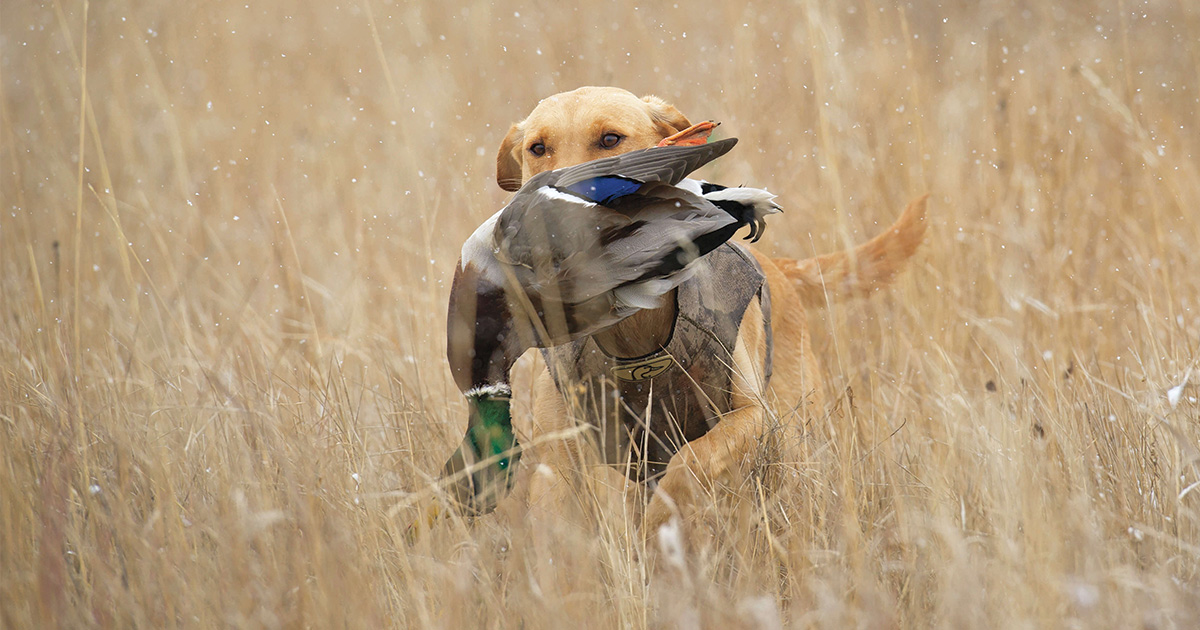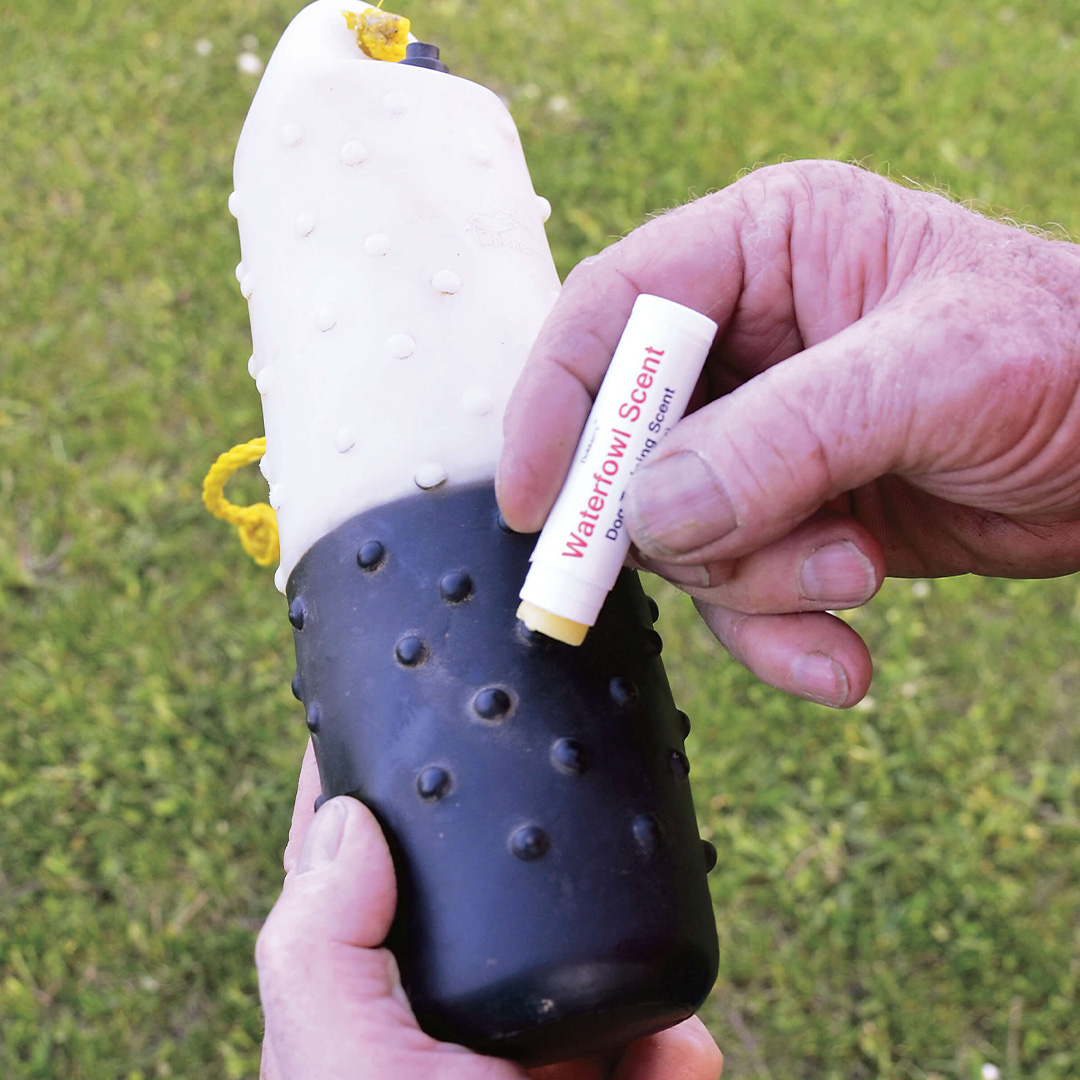Scent Training
Help your retriever learn to follow his nose
Help your retriever learn to follow his nose


Applying scent to training dummies will help your retriever learn to follow a scent trail, which is especially useful in areas where ducks may fall onto dry ground.
When I call Tom Dokken to talk about training scents and how to use them, he begins with a real-world anecdote.
"I was hunting desert quail in New Mexico," says Dokken, the proprietor of Oak Ridge Kennels and Dokken Dog Supply. "We were following pointing dogs in a Polaris Ranger, with my Lab staying on board until we needed him to retrieve. At some point, one of the other hunters realized that his shotgun was missing. We had a general idea of where it must have bounced off, but it's big country out there, and darned if we could find it.
"So I took the forearm off my over-under and had the guy rub his hands on it," Dokken continues. "I let my Lab smell it, and then I made a game of hiding it in the brush for him to find. After a few repetitions, I picked up the forearm, turned the dog loose, and in short order he located the lost shotgun. By having the guy rub his hands on the forearm, I was basically doing the same thing you do when you apply training scent to a dummy and send your dog to find it. You're telling him: 'Use your nose.' Anything you can do to develop your dog's nose and encourage him to use it has value. And if you don't have access to live birds, training scents are a great option."
Made from the blood and body parts of actual birds, training scents come in a variety of "flavors": duck, pheasant, quail, dove, etc. Do they smell like their living counterparts? Only the dogs know for sure. But these scents clearly engage a retriever's nose and activate his instincts.
Historically, training scents were available only as a liquid, which you dribbled onto a dummy as needed. Or, if you wanted to lay a scent trail, you soaked a rag, pad, or other absorbent object with the stuff. Recently, though, training scents in wax form have been developed. Packaged in a tube or a stick, you simply rub them on.

Most trainers find the wax-style scents more convenient to carry and use, and they have the added advantage of not washing off or drying out—not immediately, anyway. For adding scent to a hard plastic bumper, wax is really the only way to go. It's much easier and far less messy than jamming bumpers into a crate filled with live ducks, as Dokken used to do back in the day.
There's really no reason not to add scent to a retrieving dummy, and it's especially valuable for teaching young dogs to use and trust their noses, and for firing up dogs whose prey drive seems to be flickering.
Dokken says that you can start teaching your pup to follow a scent trail in the backyard. "Soak a rag with liquid scent, clip it to a short checkcord or piece of string, and drag it to a bush where you've dropped a dummy. Set your pup up downwind and turn him loose. You can use a command like dead bird or hunt dead if you want, but it's not absolutely necessary. The important thing is that you're getting the dog thinking, If I follow this scent trail, I'm going to find something good at the end of it."
Dokken emphasizes that you should start with short, straight trails, gradually extending them and throwing in a curve or two. "You want to build success," he says, adding, "We always associate tracking and trailing with pheasant hunting, but it's an incredibly valuable skill for a duck dog too. We've all shot ducks that fall back in the weeds and make their way to dry land, and even crippled divers will often go to shore.
"Training scents definitely have their place," Dokken says. "We tend to think of retrieving in visual terms, but the sense of smell is even more important, especially in actual hunting conditions. Whatever you can do to get your dog using his nose—training scents, live birds, or even the old trick of taping a wing to a dummy—is going to make him better at his job.
Ducks Unlimited uses cookies to enhance your browsing experience, optimize site functionality, analyze traffic, and deliver personalized advertising through third parties. By continuing to use this site, you agree to our use of cookies. View Privacy Policy